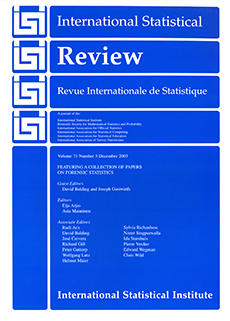Abstract
We consider a well-known controversy that stems from the use of two mixed models for the analysis of balanced experimental data with a fixed and a random factor. It essentially originates in the different statistics developed from such models for testing that the variance parameter associated to the random factor is null. The corresponding hypotheses are interpreted as that of null random factor main effects in the presence of interaction. The controversy is further complicated by different opinions regarding the appropriateness of such hypothesis. Assuming that this is a sensible option, we show that the standard test statistics obtained under both models are really directed at different hypotheses and conclude that the problem lies in the definition of the main effects and interactions. We use expected values as in the fixed effects case to resolve the controversy showing that under the most commonly used model, the test usually associated to the inexistence of the random factor main effects addresses a different hypothesis. We discuss the choice of models, and some further problems that occur in the presence of unbalanced data.
Citation
Viviana B. Lencina. Julio M. Singer. Edward J. Stanek Iii. "Much Ado About Nothing: the Mixed Models Controversy Revisited." Internat. Statist. Rev. 73 (1) 9 - 20, April 2005.
Information




